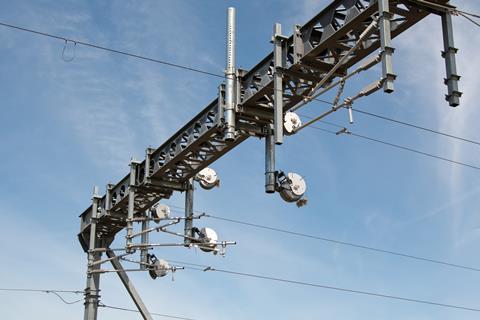
UK: The University of Huddersfield’s Institute of Railway Research is providing specialised pantograph-catenary interaction and vehicle dynamics expertise to optimise designs for the Transpennine Route Upgrade programme.
The IRR has worked with Network Rail, J Murphy & Sons, Siemens, Systra and VolkerRail to produce a three-dimensional model of multiple tracks with converging wires at Colton Junction using its PantoCat software, which analyses pantograph-catenary interaction dynamics under realistic conditions.
This was used to assess current collection performance, taking into account the pantograph types and spacings of different types of train. The modelling enabled the refinement of options, which significantly reduced the maximum contact forces in the wiring transitions and substantially improved the current collection performance.
‘The contact force modelling undertaken at Huddersfield has been of huge value to our delivery team, to Network Rail and ultimately the taxpayer’, explained David Lawrence, TRU’s Chief Engineer & Technical Director. ‘A conventional design approach was unsuccessful, so we were pleased to be able to draw on the expertise available at Huddersfield, positioned right at the heart of the Transpennine Route. The work has enabled us to produce a first-of-type design for tangentially wiring the 200 km/h double junction at Colton Junction, to achieve the best possible system, and avoid some very expensive alternatives.’
Network Rail also commissioned the IRR to apply its knowledge of vehicle-track dynamics to ensure that passenger comfort would not be compromised by increased train speeds on the curving route.
Instruments were fitted to vehicles operating on the existing route to create a ride comfort baseline, while the proposed alignment changes modelled to assess the potential impact on passenger comfort. This programme used IRR’s £1m train high-fidelity on-board motion simulator, THOMoS.
‘Computer simulation of vehicle dynamic behaviour is a powerful tool in predicting how a vehicle will behave on a given track design’, said IRR Director Professor Paul Allen. ‘However, the resulting numerical outputs can be difficult for an end-user to interpret. This is where the ability to physically experience the predicted ride accelerations within the THOMoS motion simulator really comes to the fore, as it effectively becomes possible to travel on a new route before it is built.’



